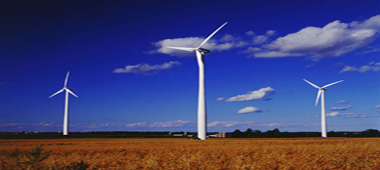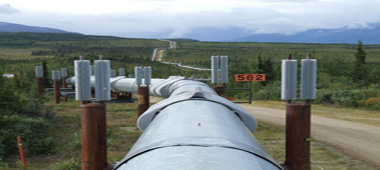Article:
Optimising the energy mix: an introduction ignoring policy issues
Michal Chudy (mchudy@eafes.eu)
The design of the best energy mix model for Europe and the environment is a very complex issue. Numerous political and financial influences, which are very different in every region and sub-region, massively distort the energy mix from the model that might be proposed on solely environmental or technical grounds. In this paper, we aim to present a rational energy mix model in respect of natural availability and environmental acceptability; however, it is not possible to avoid financial and political factors completely.
Renewable energy sources such as wind and solar –conventional renewables. These energy sources are the mainstream representatives of greenhouse free renewable energy sources. Despite big political and public support nowadays, they alone do not constitute a satisfactory solution for the future: the wind does not blow and the Sun does not shine everywhere and every time when needed. Therefore, 100% back up, most likely from non-renewable resources, is essential. Mega projects to connect all the renewable power plants into a grid with higher wind/sun guarantee will make this short coming of renewable sources less significant, but nevertheless, significant back-up capacity will always be needed. The invention of a high capacity and high efficiency energy storage technology would change the situation dramatically. Unfortunately, nothing revolutionary is going on in science towards such a discovery, which means that we cannot expect too much from this approach and focus only on these kinds of renewables in the coming decades.
Renewables with constant output such as geothermal energy are not available everywhere. However, even in suitable areas, which cover a surprisingly large part of the EU, this kind of energy is poorly used. The energy from this source is perfect from every environmental perspective and for power grids as well. It is only sad that the geothermal industry is not very developed.
Hydroelectric power (water energy) is very popular because it is clean. It is clean in the sense that no greenhouse gasses are produced, but this does not mean that it is entirely environmentally friendly. The impact of a dam on its environment is very strong, and the consequences could be very negative for local nature (animals and plants): for example, dams are very disruptive for migratory fish such as salmon (and sushi lovers may also be very sad in a couple of years). The power generated by water power plants is rather stable, but still strongly influenced by the current water flow of a river. Water power plants have by far the fastest grid response, which means that they can very promptly change their output power according to grid requirements. As they are very efficient (about 90 %), they can also be built for energy storage purposes. They are perfect as a back-up for renewables with areasonable guarantee of electrical output. Indeed, it seems to be a pity that such a clean and strong energy source as water cannot always be running on 100% and must instead balance the grid variations. However, currently, even without a significant proportion of renewable plants, water power plants are often used as first regulators.
Nuclear power is a non-renewable power source, however very much environmentally friendly as no CO2 is produced. In the case of standard operation without any accidents, the environmental impact of the full fuel cycle is negligible. This changes rapidly in the case of an accident, but accidents are becoming less probable with improving technology. The problem with spent fuel is rather political. The spent fuel is valuable material for fast reactors and other future reactors where it can used for a second time as fuel. The radioactivity after this second use will be significantly less dangerous. The main problem is that the fuel is also perfect for nuclear weapon production.
The output of nuclear power plants cannot be rapidly changed, for technical reasons. This is the main reason why nuclear power plants usually run with maximum output power, ignoring grid variations. Nuclear power plants are usually massive energy sources, which can produce a huge amount of energy from rather a small amount of fuel, which is very cheap compared to fossil sources. The real price of nuclear power is, however, higher, due to expensive commissioning, decommissioning, fuel cycle and strict safety regulations. Considering these issues, nuclear devices, nuclear power plants and the associated industry and authorities are perfect massive employers with many stable work positions.
Gas power plants. They can be practically any size or power, the technology used is rather cheap and simple, and they can be built in a very short time. They have excellent network properties such as a fast response to grid variations, which is the second fastest after water plants. The main disadvantages are CO2 production and the rather high price of gas, which is a non-renewable resource. The world reserves are finite and estimated to last for not more than another few decades. Changing heat from gas into electricity is possible with about 60% efficiency. This is higher than from uranium or coal, where the efficiency is usually physically and technically bordered bellow 50%. It is important to notice, if gas is used for house heating in a modern boiler, the efficiency can be much higher due to avoiding energy change from thermal though mechanical to the electrical.
Coal power plants are extremely damaging for the environment as, apart from a large amount of CO2, they produce several other poisonous and dangerous gasses. Coal is rather cheap,and in addition coal mining is often massively subsided in Europe. Using coal is incompatible with any kind of environmental protection. Quitting from using coal is strongly needed at least in developed countries. The loss of a large number of jobs connected with coal-mining can a serious social and economic problem.
Biomass power plants are in many respects an unpromising energy source. They are not environmentally friendly due to CO2 production and they use very similar technology to coal plants, which means practically no scientific challenge. Apart from a few very enthusiastic environmentalists, nobody sees this energy source as a major future energy source. However, the concept is not as dull as it can appear. They can be considered to be CO2 neutral, which means that they expel as much CO2 as the biomass consumed during its lifetime. Whilst this optimistic interpretation is a simplification of the reality,it must also be noted that biomass is a renewable resource.
From this brief overview it is clear, for secure and environmentally friendly energy production, that a balanced energy mix is needed. Current technologies do not allow CO2emissions to be avoided completely. However, it is could be possible in some areas for particular time intervals. In the ideal model, hydroelectric potential of a land must be used up to 100%. Water sites must produce as much energy as possible respecting their ideal characteristics as grid regulators. As the main power source, nuclear power plants look to be the ideal solution. Conventional nuclear power plants should be accompanied in the near future with advanced fast reactors, which will consume spent fuel. In a following step, nuclear (fission) power could be replaced by fusion power plants, which still need a few decades of development to become available. Solar, wind, geothermal and other CO2 free renewables should be massively employed, which requires better grid connection, so that there will always be some plants in operation. Biomass and gas power plants could then be employed as backups, which run only in the case of bad conditions for renewables. Coal plants should not exist anymore.



